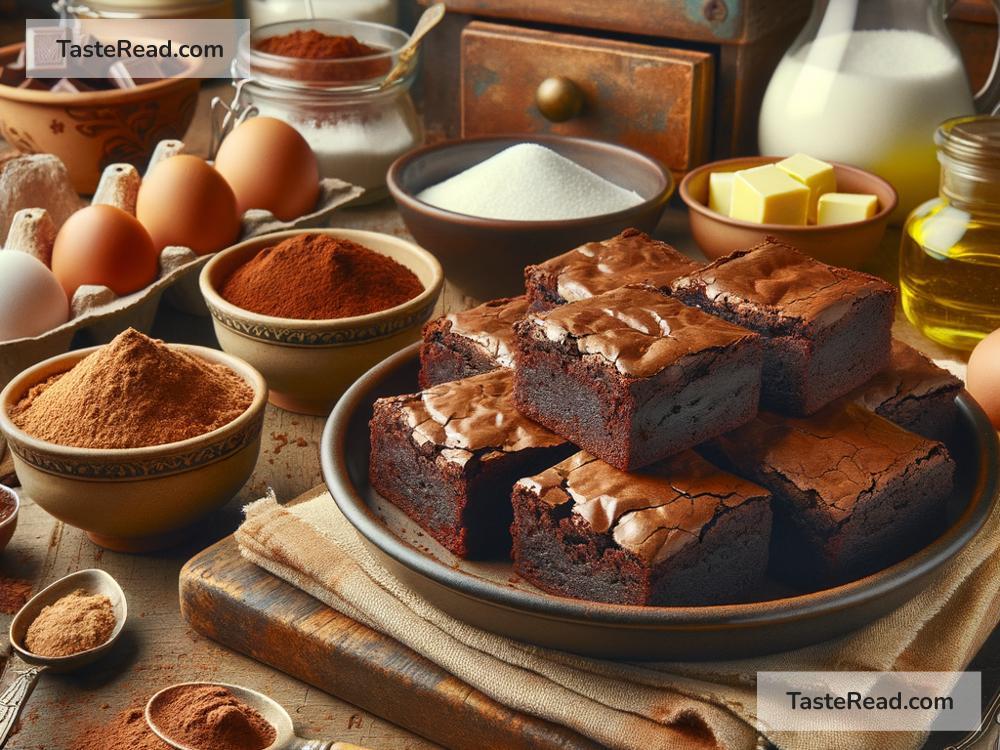The Evolution of the American Brownie: A Sweet Journey
The American brownie is one of the most loved desserts in the United States and around the world. This sweet treat is a mix between a cake and a cookie, offering a fudgy, chewy, or even slightly cakey texture. But have you ever wondered where brownies came from and how they became such a popular dessert? Let’s dive into the fascinating history of the American brownie and see how it has evolved over time.
The Origins of the Brownie
The exact story behind the invention of the brownie isn’t entirely clear, but many historians believe the brownie originated in the United States in the late 19th century. The first printed recipe for a brownie appeared in The Boston Cooking-School Cook Book in 1896, written by Fannie Merritt Farmer, a well-known cookbook author and teacher of the time. However, that version of the brownie recipe was not what we think of today—it didn’t include chocolate.
Instead, Fannie Farmer’s “brownies” were closer to molasses-based bars. These early brownies were a bit different from the gooey, chocolatey dessert we know and love. It wasn’t until the early 20th century that brownies started to include chocolate as a main ingredient.
Chocolate Makes Its Entrance
By 1904, chocolate was added to brownie recipes, which transformed these baked bars into the delicious dessert we recognize today. Many people credit the rise of chocolate desserts to the increasing availability of cocoa powder and chocolate in the U.S. During this period, industrialization made it easier to mass-produce chocolate products, lowering costs and making chocolate a common ingredient in American kitchens.
One of the first brownie recipes that added chocolate appeared in The Service Club Cook Book, published in 1904. This recipe called for melted chocolate, sugar, butter, eggs, and flour, creating a rich dessert. Over time, home bakers and chefs began experimenting with different variations, adding nuts, vanilla, and other flavors to enhance the brownies.
A Staple in American Homes
By the 1920s and 1930s, brownies had become a popular dessert in American households. Brownie recipes were featured in cookbooks, ladies’ magazines, and advertising pamphlets for baking products. They were considered easy to make and affordable, making them a favorite treat for family dinners, bake sales, and parties.
As brownies became more popular, their texture also evolved. Some home bakers preferred a fudgy brownie that was dense and moist, while others enjoyed a more cake-like version that was lighter and fluffier. These two styles of brownies remain popular today, giving people options depending on their personal taste.
Box Mixes Change the Game
In the 1940s and 1950s, boxed brownie mixes started to appear on grocery store shelves. These mixes made baking brownies even easier. Companies like Pillsbury and Betty Crocker created ready-to-use brownie mixes, allowing people to skip the process of measuring ingredients. All bakers needed to do was add eggs, water, and oil to the mix, pop it in the oven, and voilà—perfect brownies every time!
Boxed mixes helped brownies become even more widespread. They became a staple dessert at parties, school events, and potlucks. While some people still prefer making brownies from scratch, boxed mixes remain a convenient option for busy bakers and are still loved by many today.
Creative Variations
Over time, brownies evolved into more than just a simple chocolate dessert. Bakers and chefs began experimenting with new ingredients and flavors, creating unique variations. Today, there are endless types of brownies available. Here are a few popular versions:
- Blondies: These are similar to brownies but made without chocolate. Blondies often use brown sugar or vanilla as the main flavor and can include mix-ins like nuts or white chocolate chips.
- Nutty Brownies: Many recipes include walnuts, pecans, or almonds to add a crunchy texture to the soft brownies.
- Salted Caramel Brownies: A modern variation includes caramel drizzled over the brownies, sometimes with a sprinkle of sea salt for flavor contrast.
- Cheesecake Brownies: These feature a topping or swirl of cream cheese, combining the rich flavors of brownies and cheesecake.
- Vegan or Gluten-Free Brownies: As dietary preferences evolved, bakers created recipes using alternative ingredients like almond flour or plant-based substitutes to make brownies healthier and accessible to everyone.
Brownies Today: A Global Favorite
Although brownies were invented in the United States, they are now popular all around the world. You can find brownies in bakeries, coffee shops, and restaurants in almost every country. They’ve become a staple dessert, cherished for their rich chocolatey flavor and comforting texture.
The evolution of the American brownie has been a story of creativity and adaptability. From humble beginnings in the late 19th century to a global phenomenon, brownies have come a long way. Whether you prefer them fudgy, chewy, or cakey, brownies remain one of the most beloved desserts in history.
So, the next time you bite into a brownie, remember the journey this little square of chocolate has taken to become a favorite treat for millions of people. It’s a delicious reminder of how food evolves—and how something sweet can bring people together.


